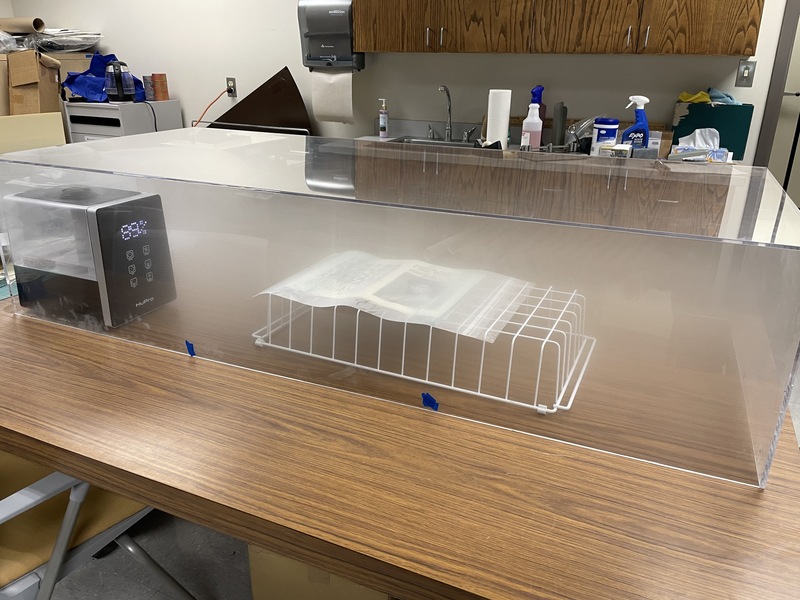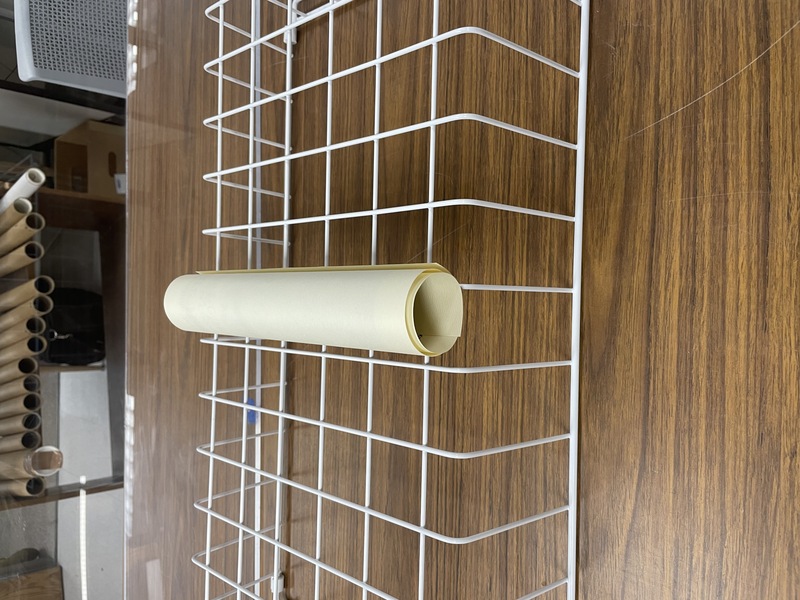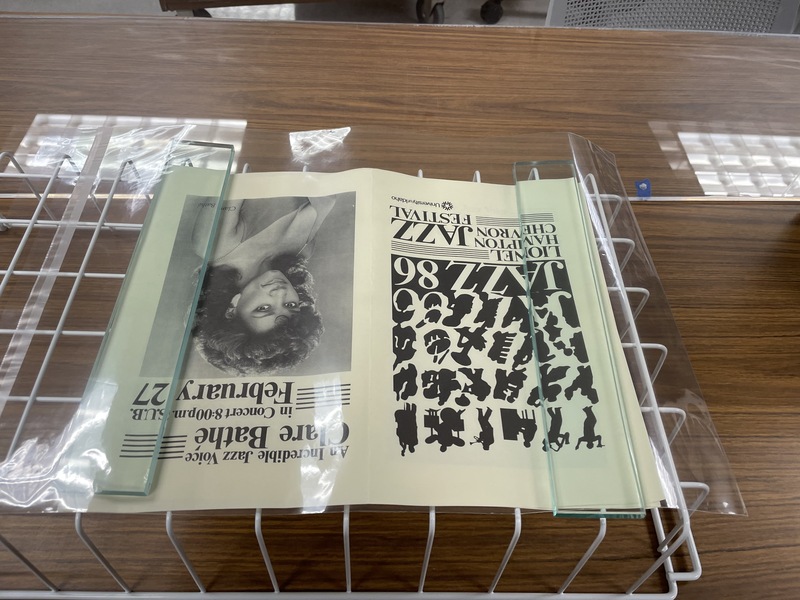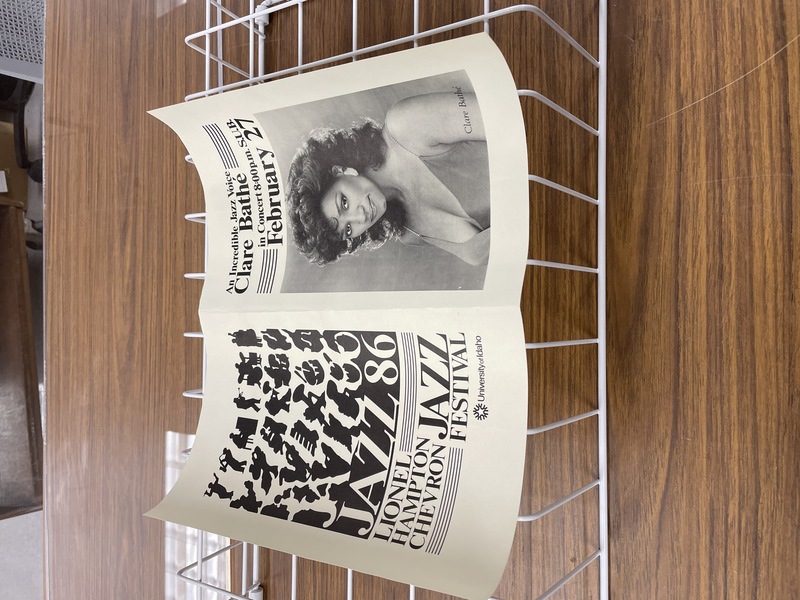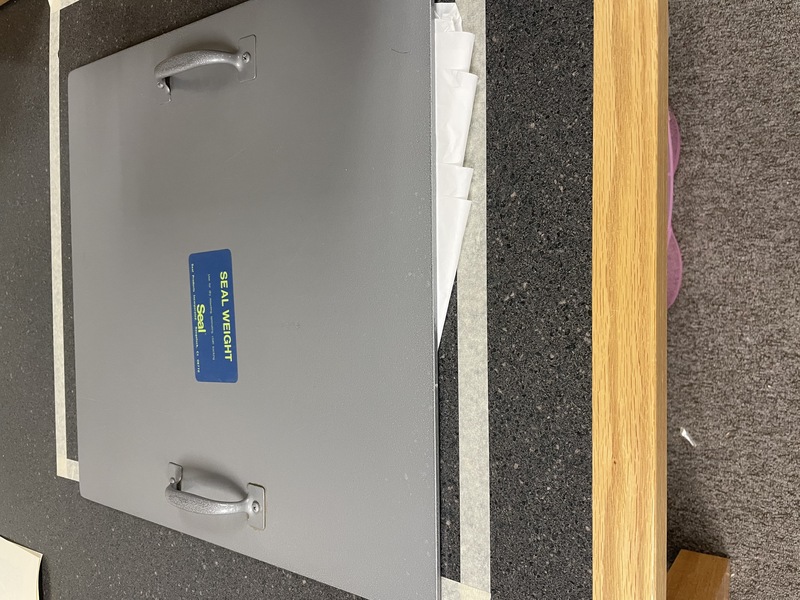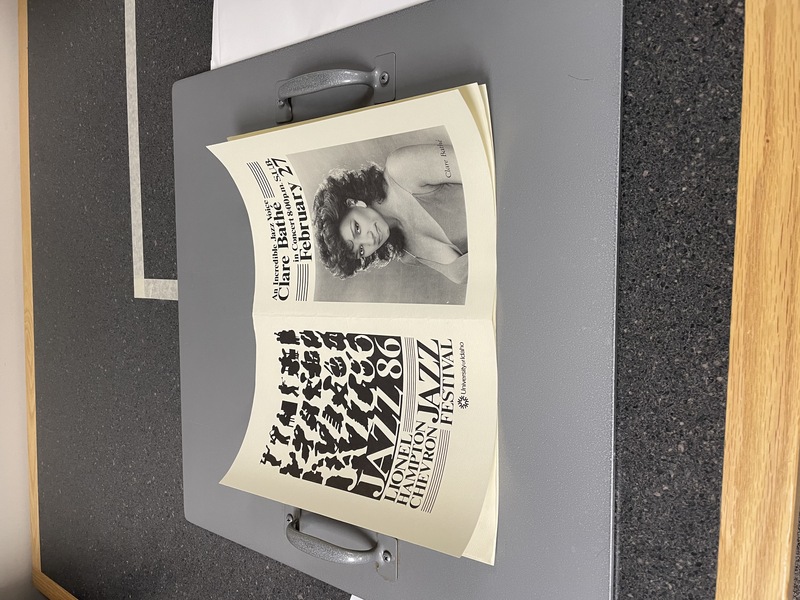Last week was National Preservation Week where libraries and archives promote the importance of preservation work and often share resources on how to preserve various materials. As is often the case, we got caught up with other projects and reference and just the day to day distractions of archival work, and forgot to do anything special. To remedy this vast oversight, we thought we’d share some of the preservation work we have been doing on one of our collections over the last few weeks.
Now, a month or so ago, we were able to acquire an air humidifier. Now in many cases, a lot of humidity and water is not good for archival collections. Water is very damaging to paper and super humid environments can lead to mold growth which no archivist ever wants. However, in some cases, you can help preserve rolled or bent documents by putting them in a humidification chamber. The moisture in the air helps to loosen the fibers of the paper, ultimately relaxing it. A once tightly rolled document can end up as flat as if it was fresh out of the printing press.
One of our collections contains a vast number of posters from the Lionel Hampton Jazz Festival. The rolled posters are hard to identify, hard to store, and difficult to digitize (which is something we are actively trying to do with this collection), so the first thing we wanted to try our new humidifier on was these posters. It is also important to note that for some of these posters we have several duplicates. We made sure to do our initial test on one of the duplicate posters to make sure no originals were damaged.
There are several ways to create a humidification chamber, but ours was created with a broken exhibit case top, some baking racks, mylar and the humidifier.
Note that it is super cool and we are super excited about it.
We started our process with a tightly rolled poster. Placed it on a rack, so it wasn’t sitting directly on the table. This is because water could recondense on the table, and we didn’t want our poster getting wet. After weighting down the edges, so it was laying flat, we then covered the poster with a plastic covering (also to protect against condensing water).
After running the humidifier for about an hour, we checked on the poster, and it had become so much flatter!
When the poster came out of the humidification chamber, we were not done. The poster was now a little damp and it needed to dry, but while drying it was important to lay it flat under some weight. So, I placed it between some white mats with a large weight and let it dry over night. Finally, after letting it sit, we took it out from under the weight and it was even flatter! It is now ready to be placed into a folder and stored flat.
Now these images are from the first attempt at humidifying a poster. Since then we have done some more and gotten a bit better at the process and now have several very flat, very happy posters.


